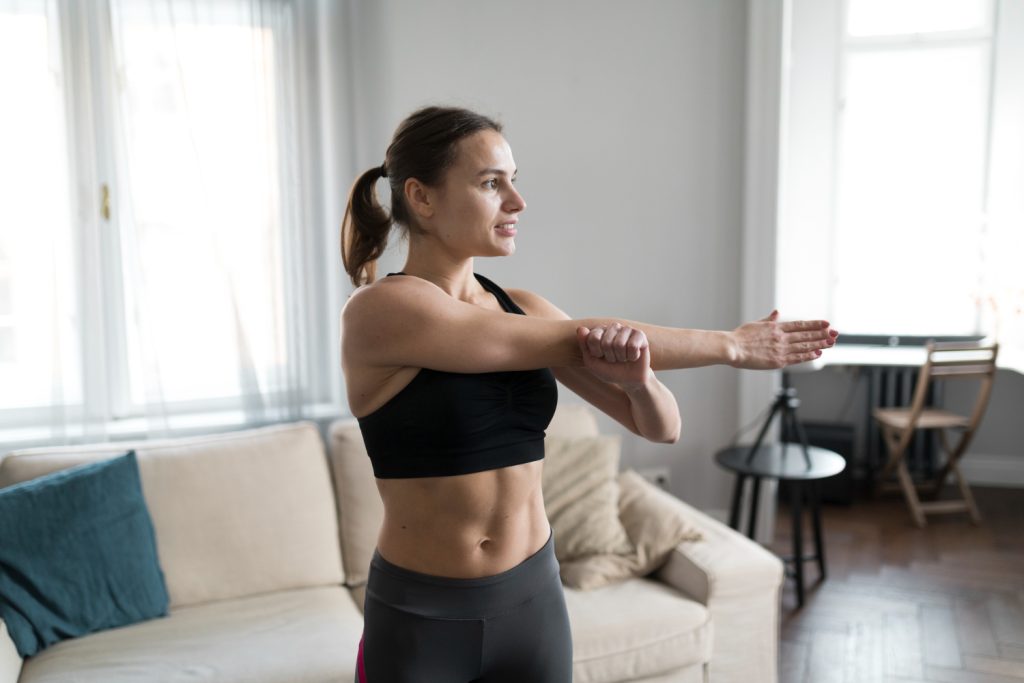You’ve just undergone that aesthetic procedure you’ve been dreaming of, and now you’re wondering: when can I go back to the gym?
This question crosses the mind of nearly every active patient who undergoes cosmetic surgery. The desire to return to your fitness routine makes perfect sense, but your body needs time to recover properly.
What happens to your body during recovery
When you undergo any surgical procedure, your body begins a complex healing process. The tissues have been manipulated, blood vessels need to regenerate, and natural inflammation is part of this process. Pushing yourself into intense physical activity too soon can compromise all the work done by your surgeon.
When you can return to working out
There’s no single answer that fits every case. Recovery time varies considerably depending on the type of procedure, its extent, and how your body responds to surgery.
Facial procedures
If you’ve had a rhinoplasty or facelift, the recommendations tend to be more conservative. Light walks can usually begin after the first week.
Moderate cardiovascular exercises are typically allowed around 3 to 4 weeks, while activities that significantly raise blood pressure should wait until about 6 weeks.
Body surgeries
Tummy tucks and liposuction require a bit more patience. Your core has been heavily involved during the procedure, and the abdominal muscles need time to fully recover.
Gentle movements can start after about 2 weeks, but any exercise involving the abdomen should wait 6 to 8 weeks.
Breast procedures
For those who’ve undergone breast augmentation, reduction, or lift, the return to exercise after plastic surgery follows a specific timeline.
Lower body activities can usually resume earlier, around 2 weeks, but upper body workouts and high-intensity training should wait between 4 and 6 weeks.
Recommended stages before returning to exercise
Recovery doesn’t happen in a straight line. Each phase requires specific care and different levels of effort.
The table below shows the average time frames for resuming physical activities, based on guidelines commonly followed in American clinics:
| Type of activity | Average time to resume | Examples |
| Light walks | 2 to 3 weeks | Walking at home or on flat surfaces |
| Moderate exercises | 4 to 6 weeks | Stationary bike, elliptical |
| Intense workouts | 8 to 12 weeks | Running, weight training, HIIT |
| High-impact exercises | 3 to 6 months | Jump rope, contact sports |
These time frames don’t replace your surgeon’s clearance. Every body heals differently, and factors such as age, nutrition, and medical history directly influence the healing process. Medical supervision ensures that the return to activity happens gradually and safely.
How to prepare to return to your workout routine
Getting back to exercise requires strategy and patience. Doctors usually recommend a few practices that support recovery and gradual adaptation:
- Start with short walks and gentle movements;
- Prioritize low-impact activities during the first few weeks;
- Wear compression garments as instructed by your surgeon;
- Maintain hydration and a diet rich in protein and vitamins;
- Avoid excessive heat, saunas, and sun exposure;
- Watch for warning signs such as pain, redness, or increased swelling.
This gradual transition helps your body regain strength and balance without compromising aesthetic results.
Close follow-up with your surgeon provides safety and allows adjustments based on your individual recovery progress.
Signs you should pay attention to
Your body communicates with you — learn to listen. If you notice any of these signs during or after exercise after plastic surgery, stop immediately:
- Pain that increases instead of subsiding
- Swelling that worsens or appears suddenly
- Bleeding or drainage from the incisions
- Opening of stitches
- Unexplained shortness of breath
- Dizziness or feeling faint
Your next step
If you’re planning a cosmetic procedure or have already undergone one and still have specific questions about when and how to return to your favorite workouts, the best decision you can make is to schedule a personalized consultation.
At Smart Plastic Surgery, our specialists evaluate your case individually and create a safe, customized plan for your return to physical activity.
Remember: your body has gone through a significant transformation. Respecting your recovery time isn’t wasting time — it’s ensuring that the results you’ve been waiting for remain lasting and satisfying. The gym will still be there for you when the right moment arrives.
Contact us today and get all your questions about exercise after plastic surgery answered by professionals who truly understand the process.
FAQ
1. How long after plastic surgery can I exercise?
The timeline varies depending on the type of surgery, but most patients resume light activities between four and eight weeks after medical clearance.
2. Can I walk after plastic surgery?
Light walks are usually recommended after about two weeks, always with your surgeon’s approval.
3. What happens if I exercise too soon after surgery?
Starting physical activity too early may cause wound reopening, bleeding, and delayed healing.
4. When can I lift weights after a tummy tuck or BBL?
Weight training usually resumes between eight and twelve weeks, depending on the healing process and the type of exercise.



